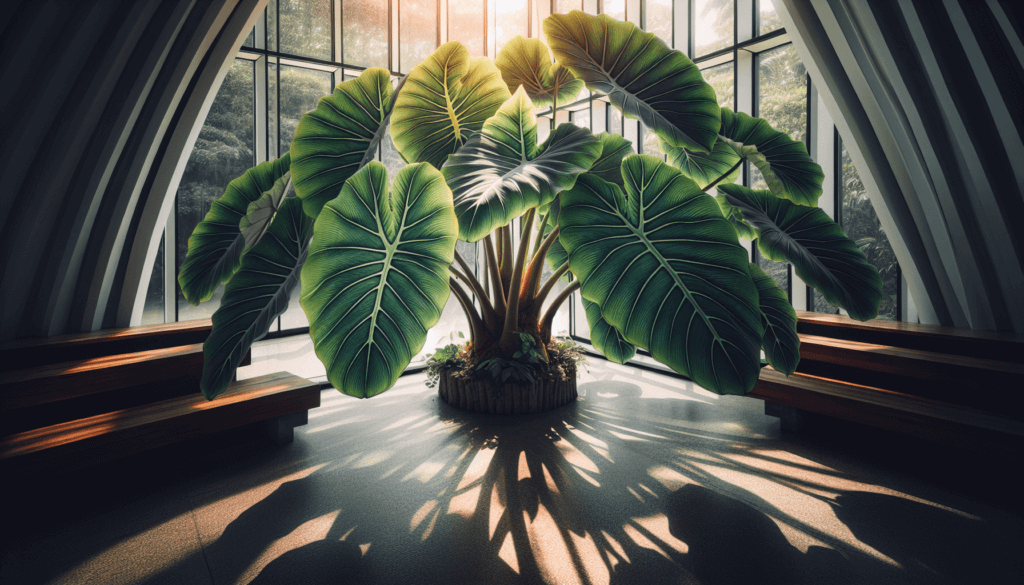Are you looking to add some tropical vibes to your indoor space? If so, then you’ll want to know all about elephant ear plant care indoors. These gorgeous plants, known for their large, unique leaves, can bring a touch of lush greenery to any corner of your home. From the right lighting conditions to proper watering techniques, this article will guide you through everything you need to know to keep your elephant ear plant thriving and happy indoors. So, get ready to create a vibrant and inviting atmosphere with this stunning houseplant!
Choosing an Elephant Ear Plant
When it comes to choosing an Elephant Ear plant for indoor care, there are several popular varieties to consider. Some common choices include Alocasia, Colocasia, and Xanthosoma. These plants have large, dramatic leaves that can add a touch of tropical beauty to your indoor space. Before making your selection, it’s important to consider the size and space requirements of the plant, as well as checking for the overall health of the plant.
Light Requirements
Once you have your Elephant Ear plant, it’s crucial to provide it with the right amount of light. These plants thrive in well-lit areas, but it’s important to avoid direct sunlight to prevent leaf damage. Indirect or filtered light is ideal for these plants. If you have a low-light environment, you may need to consider supplemental lighting to ensure the plant gets enough light to thrive.

Temperature and Humidity
Creating the right temperature and humidity conditions for your Elephant Ear plant is essential for its overall health and growth. These plants prefer warm and humid environments, so aim to maintain a temperature range of 65-85°F (18-29°C). To increase humidity, mist the leaves regularly or consider using a humidifier in the room where the plant is located. These measures will help replicate the plant’s natural habitat and ensure it thrives.
Watering and Moisture
Proper watering and moisture management are key to the success of your Elephant Ear plant. Aim to keep the soil consistently moist but not waterlogged. Overwatering can lead to root rot, while letting the soil dry out completely can cause stress to the plant. When watering, make sure to water thoroughly and allow excess water to drain from the pot. This will prevent water from sitting at the bottom, which can also lead to root rot.

Soil and Potting
The choice of soil and potting plays a crucial role in the health and well-being of your Elephant Ear plant. It’s important to choose well-draining soil that also retains some moisture. Opt for a mix that includes organic matter, such as peat moss or compost, to provide essential nutrients to the plant. Additionally, using a pot with drainage holes is essential to prevent waterlogging. This allows excess water to escape and ensures that the roots are not sitting in water.
Fertilizing
Fertilizing your Elephant Ear plant is necessary to provide it with the nutrients it needs for healthy growth. During the growing season, which typically falls in spring and summer, it’s recommended to feed the plant monthly with a balanced, water-soluble fertilizer. This will help promote lush foliage and vibrant growth. However, it’s important to avoid overfertilization, as it can burn the plant and cause damage.
Pruning and Propagation
Regular pruning is important to maintain the overall health and appearance of your Elephant Ear plant. If you notice any yellow or damaged leaves, it’s best to trim them off to prevent further issues. Additionally, removing any dead or dying foliage will help redirect the plant’s energy towards healthy growth. If you’re interested in expanding your Elephant Ear plant collection, you can propagate it through division or by planting rhizomes.
Pests and Diseases
As with any plant, Elephant Ear plants are susceptible to pests and diseases. Common pests to watch out for include spider mites and mealybugs. These can cause damage to the leaves and overall health of the plant. If you notice an infestation, it’s important to treat it promptly using organic or chemical control methods. Additionally, providing proper care and avoiding overwatering can help prevent diseases and keep your plant healthy.
Managing Elephant Ear Plant Size
If you’re concerned about controlling the size of your Elephant Ear plant indoors, regular pruning is key. By trimming back the foliage on a regular basis, you can manage the overall size and shape of the plant. Additionally, limiting the pot size can help restrict root growth, preventing the plant from becoming too large for its location. For those who have larger varieties of Elephant Ear plants, it may be worth considering outdoor options where they can thrive and reach their full potential.
Common Issues and Troubleshooting
Yellowing leaves are a common issue with Elephant Ear plants and can be caused by both overwatering and underwatering. To address this problem, make sure to adjust your watering routine to keep the soil consistently moist but not waterlogged. If you notice brown tips on the leaves, it may be a sign of low humidity or nutrient deficiencies. Increase humidity levels and consider adjusting your fertilizing routine to provide the necessary nutrients. Leaf curling can be caused by pests, excessive light, or temperature fluctuations. Take appropriate measures to address these factors and ensure the plant’s overall well-being.
By following these tips and guidelines, you can create an ideal environment for your Elephant Ear plant to thrive indoors. With the right care and attention, these majestic plants can bring a touch of the tropics and beauty to your living space. Enjoy the process of caring for your Elephant Ear plant and watch as it grows into a stunning addition to your indoor garden.


